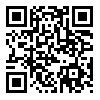<Begin Rant>
 A real estate magazine arrived in the mail yesterday and as is my normal procedure, I looked through it to see who was advertising homes in print these days. Now this rant is not about why you advertise in print, I get it. There are still some sellers out there who think that print ads sell houses. But, the latest NAR Profile of Home Buyers and Sellers should put that argument to rest forever. You need to get it if you don’t already have it and be prepared to show the sellers Exhibit 3-9 on Page 50. ‘Nuff said.
A real estate magazine arrived in the mail yesterday and as is my normal procedure, I looked through it to see who was advertising homes in print these days. Now this rant is not about why you advertise in print, I get it. There are still some sellers out there who think that print ads sell houses. But, the latest NAR Profile of Home Buyers and Sellers should put that argument to rest forever. You need to get it if you don’t already have it and be prepared to show the sellers Exhibit 3-9 on Page 50. ‘Nuff said.
No, this rant is about QR codes. This particular magazine trumpeted on the front cover that their QR code technology sends home information to any mobile device. While this isn’t entirely accurate (The mobile devices needs to have a scanner app installed) the idea itself is very sound.
The problem arises in the execution. When I scanned all of the QR codes in the magazine, some of them would not resolve into a website. They simply did not work. The issue arose when I was able to scan a QR code and was taken to a scaled down version of the agent’s website. Folks, think about this for a moment. Someone is reading a magazine. They whip out their phone (somewhat unlikely, but I’ll grant that Gen Y would do this) scan the code and get taken to a miniature version of what they could see if they simply entered the agent’s website address into their desktop or laptop computer! After all, all of the ads also contained a website address along with the other contact info.
In order to view one of these miniaturized sites a person would have to zoom in and then pan back and forth and then up and down in order to find something. If they are looking at your ad and decide to scan a QR code, then it is very likely that they want more information. Why would you then send them to a site that they couldn’t see? Maybe it’s because you simply don’t know what you need to do in order to make this marketing technique effective.
So here are a few hints. First of all, don’t use a QR to send people to your regular site. They were not built to be viewed on the small screen And scaling it down or miniaturizing it only makes it difficult to view. Secondly, DO have a mobile optimized site. A mobile optimized site is one where the navigation is large, easy to view and is limited to things that can be easily done on a phone. Like a Call Me button, a map and simple directions to the home being advertised, a way to send an email and some photos. Scan the code on this page to see an example of a mobile optimized website,or if you don’t have a scanner app, type this into your phone’s browser: http://jkfbmc.com/mdgre/
 Another good use for a QR is to put it on your flyer box and have it send viewers to a page devoted to that one listing. That page could be part of the overall mobilized site or it could be a standalone site. Take a look at the flyer box in the picture to see what I am talking about. Here is the link to a dedicated page to that listing: http://jkfbmc.com/mdgre/gallery.php, again type that into your phone’s browser.
Another good use for a QR is to put it on your flyer box and have it send viewers to a page devoted to that one listing. That page could be part of the overall mobilized site or it could be a standalone site. Take a look at the flyer box in the picture to see what I am talking about. Here is the link to a dedicated page to that listing: http://jkfbmc.com/mdgre/gallery.php, again type that into your phone’s browser.
So, in closing, QR codes are a good tool that can be used to help you reach the Gen Y buyers and sellers. They want to communicate using the tools that they grew up with and they will respond when you give them a chance. But sending them to your regular website via a QR code only serves to tell them that you have no idea what you are doing…and we both know that that isn’t the case! </end rant>
If you want to see what your website looks like on a mobile phone, simply type the address into your phone’s browser. If you don’t like what you see, don’t use a QR code to send people there! They won’t like it either! Then get in touch with me and I’ll help you fix the problem. Here is a link to flyer that will give you special pricing on mobile websites…but hurry because it is only good until 3-18-12!
Discover more from RealtyTechBytes.com by Jerry Kidd
Subscribe to get the latest posts sent to your email.







